Build a Content Marketing Funnel That Converts

You know that dream where you’re back in high school, juggling flaming textbooks while the teacher talks about deadlines? Running a small business can sometimes feel a lot like that — except instead of textbooks, you’ve got inventory, invoices, and (gulp) marketing strategies. And they’re all on today’s to-do list. Good luck, soldier.
We’re here to help, at least a little. For the marketing strategies part, you’re probably aware that you should have a content marketing funnel.
After all, most marketing experts will tell you that you need one. It’s generally considered a best-practice strategy for turning potential customers into loyal buyers.
So, in this guide, we’re breaking down content marketing funnels. This is for busy business owners who want to save time, optimize resources, and increase revenue by attracting and converting the right customers.
Grab a cup of coffee (or your beverage of choice), and let’s dive in!
What Is a Content Marketing Funnel?
A content marketing funnel is actually a pretty simple concept: it’s the journey your customers go through as they learn about your business, consider their options, and eventually decide to purchase from you.
The “funnel” metaphor is used because lots of people enter at the top (when they’re just discovering your brand), and fewer people exit at the bottom (when they finally convert into paying customers).
Most marketers divide this journey into three main stages:
- TOFU (Top-of-the-Funnel): Where total strangers become aware of your business.
- MOFU (Middle-of-the-Funnel): Where intrigued prospects explore and evaluate your offerings in more detail.
- BOFU (Bottom-of-the-Funnel): Where the most interested leads become actual customers (and, ideally, raving fans).
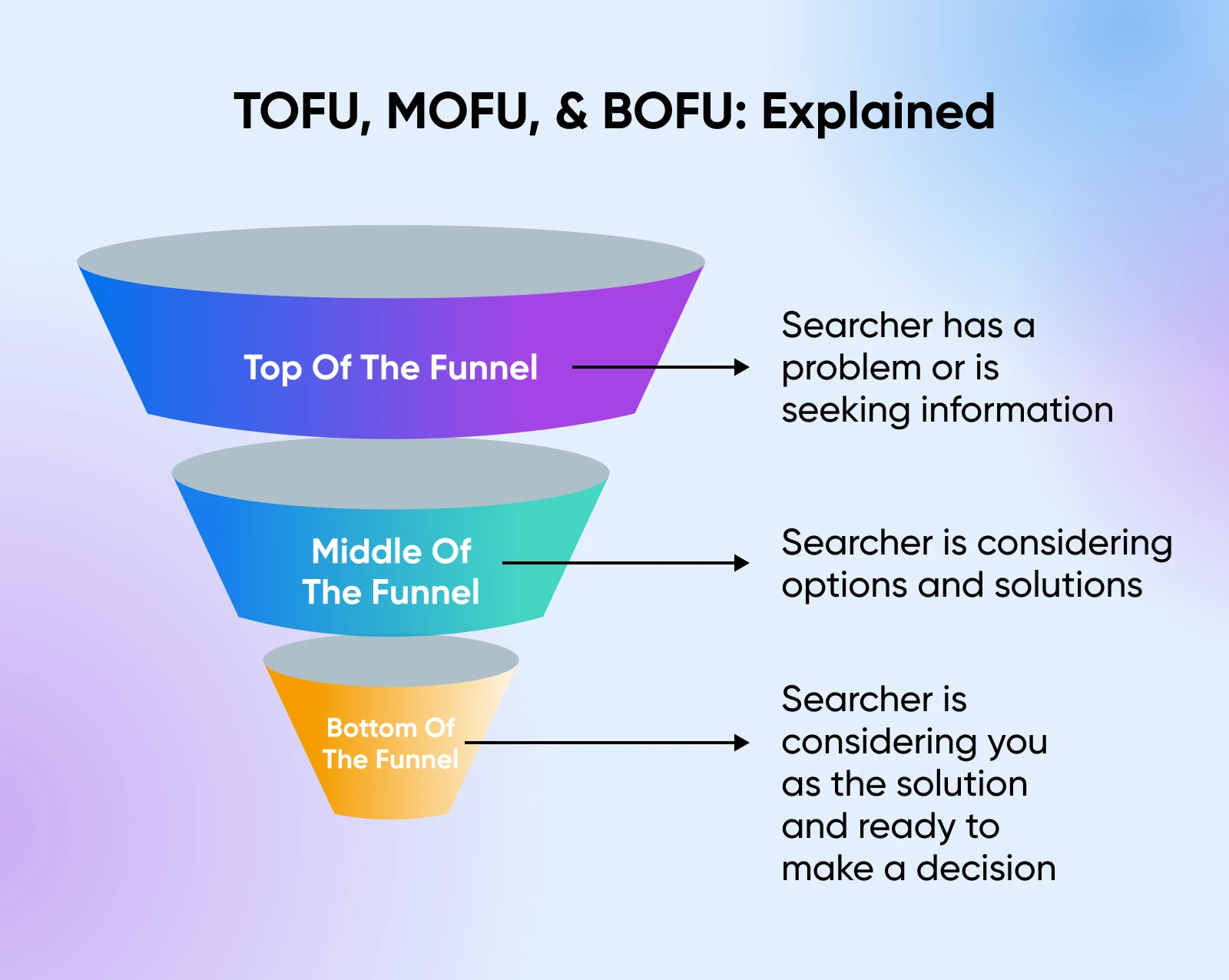
For small business owners, the content marketing funnel is all about being wise with your limited resources — you create the right kind of content for each stage, so you’re not wasting money trying to sell a cold audience on a high-ticket product or bombarding long-time prospects with basic brand-awareness.
Instead, you deliver the right message to the right people at exactly the right time, which moves them down the funnel toward buying from you.
The right message + the right prospects + the right stage of the funnel = PROFIT.
Instead of “spraying and praying” with your marketing (throwing out messages to anyone who will listen), the funnel approach helps you focus on creating relevant, targeted content for each phase of the buyer’s journey. That means you spend less time convincing people who aren’t interested, and more time guiding the right people to become your customers. Speaking of the buyer’s journey…
Mapping Content to Your Buyer’s Journey
To build a truly effective funnel, you’ll need to map these stages (TOFU, MOFU, and BOFU) on your buyer’s journey. That journey typically has four phases:
- Awareness: The buyer realizes they have a problem or a need
- Evaluation: They look into different options to solve that problem or satisfy that need
- Decision: They narrow down their choices and decide whom to purchase from
- Delight: They become loyal customers, return for future purchases, and (ideally) spread the word about your business
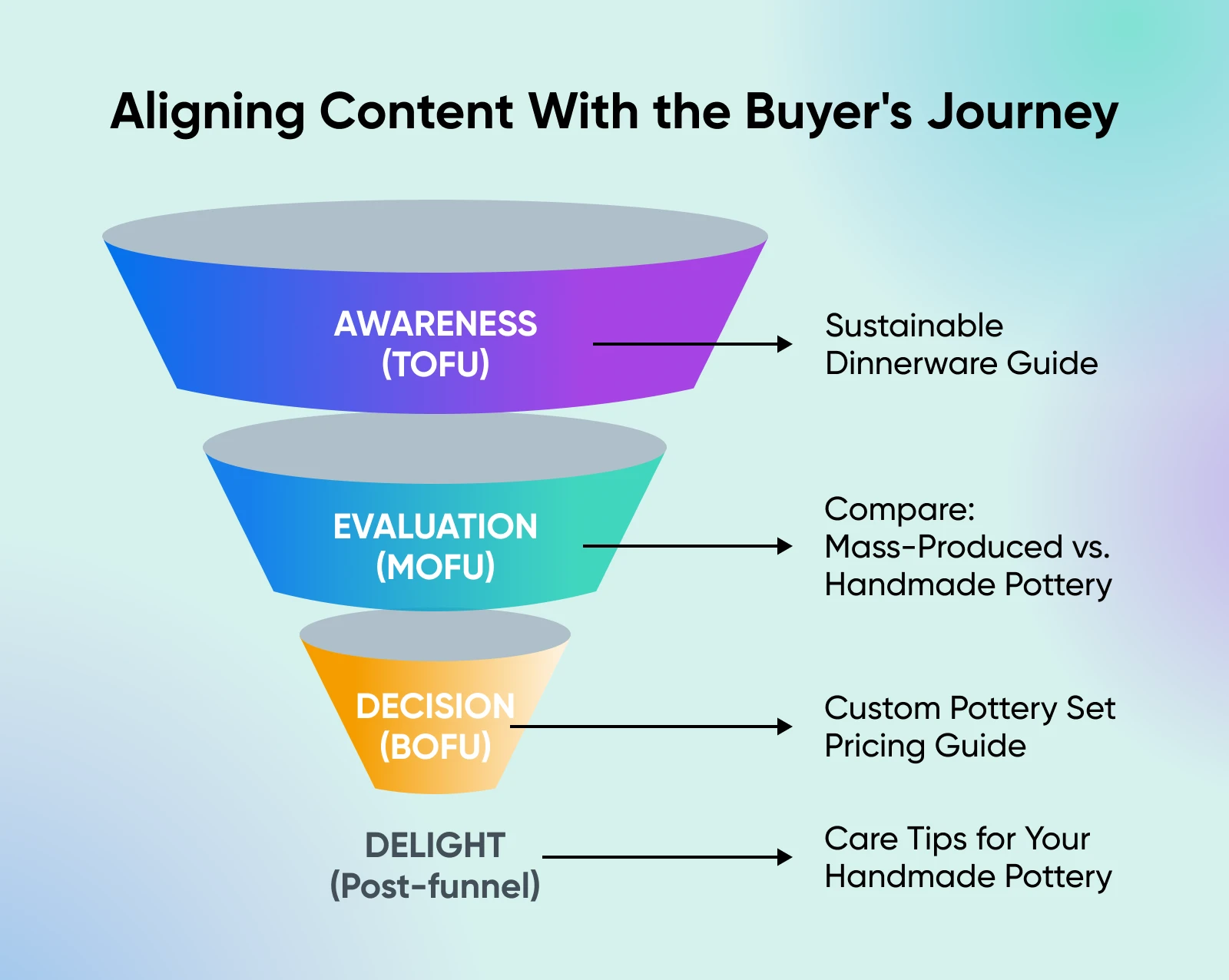
Aligning your content with these stages is the secret sauce. If you show a new visitor (“Awareness” stage) a hard-sell, “Buy Now!” pitch right away, you’ll likely scare them off. Similarly, someone who’s ready to buy (“Decision” stage) might get frustrated if all you offer them is top-level, introductory info.
Before you create anything, take a moment to sketch out who your audience is. You don’t need a 30-page buyer persona — if you’re worried about making buyer personas and complicated flowcharts, don’t overthink it.
Start small by asking yourself a few straightforward questions about your ideal customers:
- Who are they? Think demographics or even broad descriptions like “busy parents looking for healthy meal ideas.”
- What do they struggle with? Identify the main problem your product or service solves.
- Where do they hang out online? Are they TikTok enthusiasts, Instagram scrollers, blog readers, or email devotees?
- Which messages resonate with them? For example, do they respond to data-driven articles, personal stories, how-to videos, or something else?
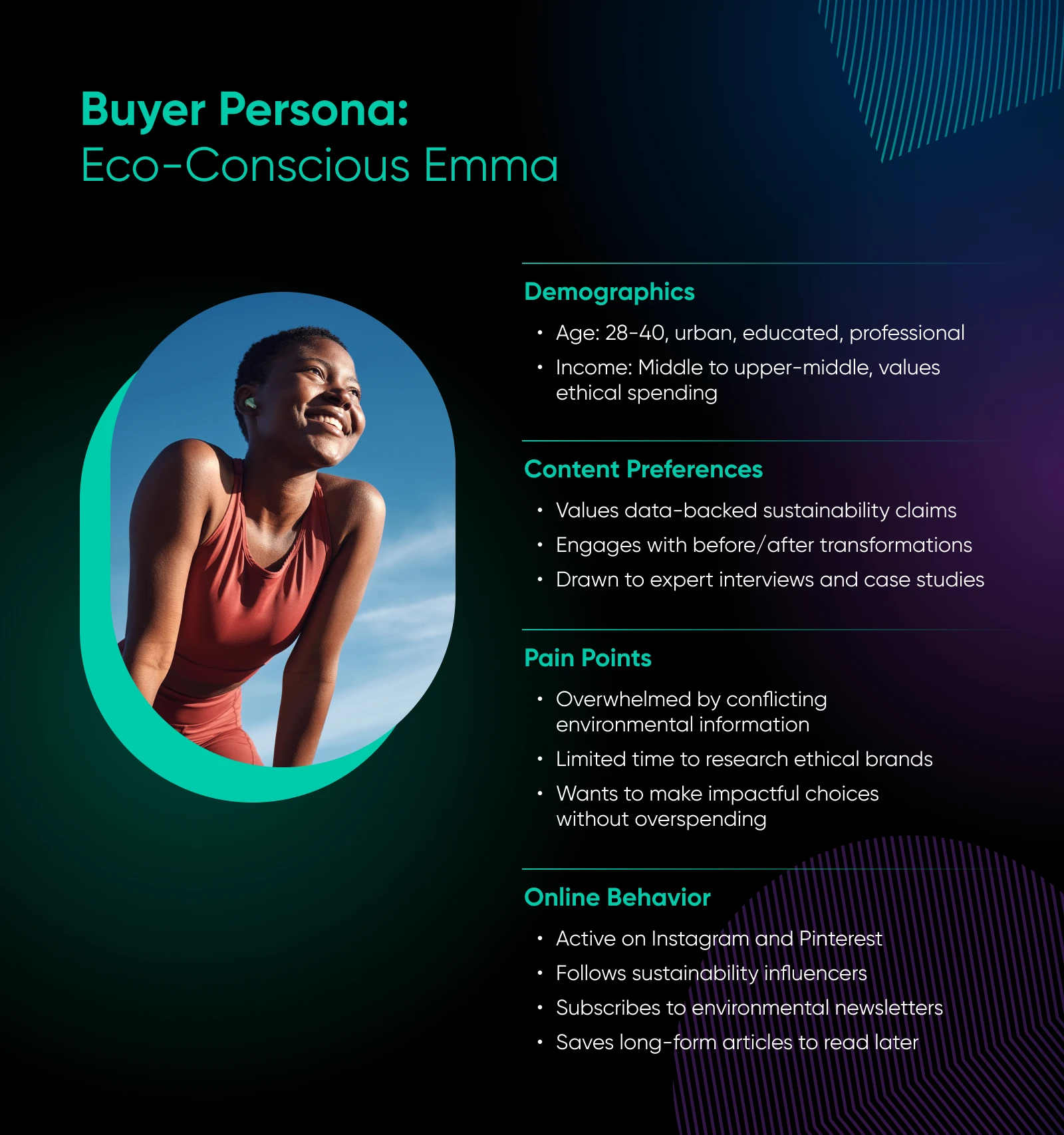
From there, pick content topics (and formats) that will speak to these potential buyers at each stage. Maybe your small business is a local bakery, and your ideal customers love scrolling Instagram for recipe inspiration. In that scenario, it would be a smart marketing move to create short, eye-catching videos about your best dessert tips or share beautifully staged photos of your treats. That’s how you get on their radar before they even realize they’re craving something sweet.
And for budget-strapped businesses, remember that you don’t have to pay for fancy data analysis platforms to figure out your buyer’s journey. Sometimes, a simple poll on your social media pages or a quick email survey can give you enough insights to tailor your content efforts.
As we move on to talk more about the three stages of the content marketing funnel, keep the buyer’s journey in mind. No matter which stage of the funnel you’re creating content for, you’ll always want to apply it to the buyer journey to maximize its effectiveness.
Top-of-the-Funnel Content
Top-of-the-funnel content targets people who haven’t heard of you or your solution yet. They might not even know they have a specific need. Your job here is to pique their curiosity and introduce them to your brand. Think of this as your first handshake with a potential customer.
Types of TOFU Content
TOFU content typically includes:
- Blog posts: Educational articles that answer common questions or provide insight into industry trends
- Social media posts: Light, shareable content that showcases what you do, behind-the-scenes moments, or timely offers.
- Videos: Snappy how-tos, product teasers, or behind-the-scenes clips.
- Infographics: Visual summaries of useful or surprising data relevant to your industry or niche.
- Podcasts: If your audience loves listening on the go, short audio segments introducing key topics are perfect.
Choose one or two formats you can maintain consistently on your budget. For example, if writing is your strong suit, maybe blog posts and social media snippets are the way to go.
Here’s an example: A local pet shop owner notices that many new dog owners in their area struggle with choosing the right food. So they start a blog series titled “Puppy 101,” sharing easy-to-digest (pun fully intended) tips and brand recommendations. It draws in first-time dog parents, who later become loyal customers both online and in-store. TOFU success!
See how local Milwaukee pet store, Bentley’s, publishes posts on diet, grooming, and more.
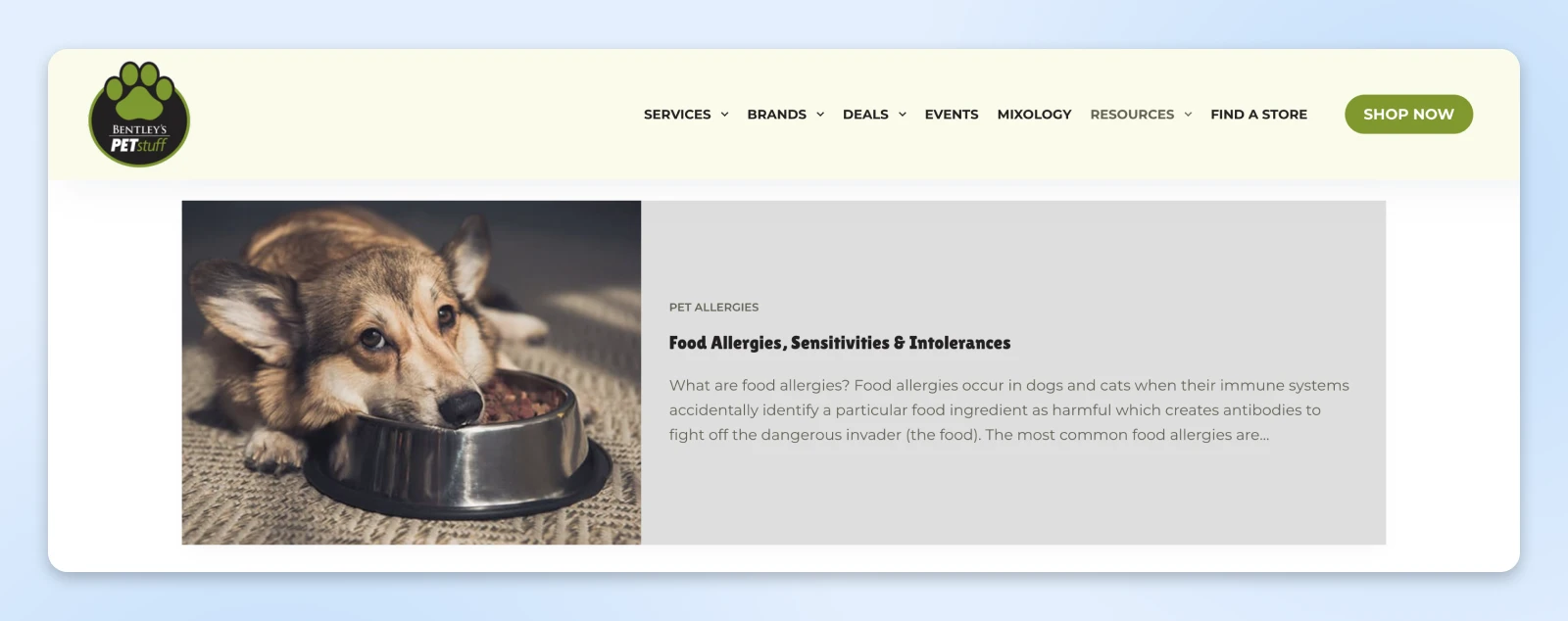
How To Choose the Right TOFU Content for Your Business
Not every platform or content format will be right for you. To figure out what works best:
How To Create TOFU Content
Follow these steps to create TOFU content for your business:
Another hot tip: Don’t sleep on free tools.
- Canva is great for simple graphic design.
- Unsplash has thousands of free images.
- Grammarly can double-check your spelling and grammar.
Even on a shoestring budget, you can access tech to help you along this process.
How To Distribute TOFU Content
You can have the best blog post in the world, but if no one sees it, it might as well not exist. To get the most from your TOFU content, look for low- or no-cost marketing channels that align with your audience. For example, if your readers hang out on Facebook, share your posts there. If your content is more visual, focus on Instagram or TikTok.
Here are some ideas:
- Organic social media: Share on platforms you know your audience visits.
- Email newsletter: If you already have subscribers, send them your latest blog post or video link.
- Search engine optimization (SEO): Use simple keyword research to make your blog posts more discoverable in Google searches. Even basic SEO can open your content to a wider audience.
- Community groups: Join Facebook or LinkedIn groups relevant to your niche and share helpful content. But avoid spamming!
- Guest blogging: Offer to write a guest post for a partner’s blog in exchange for a link back to your site.
How To Measure TOFU Success
Your aim at this point is to capture attention and build awareness. So, metrics like website traffic, social media engagement, and new email sign-ups can help you see if you’re on the right track. Don’t worry too much about immediate conversions at this point. If you see an uptick in readers or followers, you’re doing something right.
Here are some good metrics to monitor to see if your TOFU content efforts are paying off:
- Page views/traffic: How many people visit your site or landing page?
- Social media engagement: Are you getting likes, comments, or shares?
- Email signups: Are people subscribing to your newsletter after seeing your TOFU content?
Free tools like Google Analytics and built-in social media analytics are enough to get you started. Don’t obsess over every single number; just keep an eye on trends and whether things are moving in the right direction.
Middle-of-the-Funnel Content
Once people have an initial impression of who you are (and maybe even like you), they move into the middle of the funnel. They’ve shown interest but aren’t fully convinced to purchase yet.
MOFU content needs to go deeper than TOFU content.
It should offer substantial information, demonstrate your expertise, and address any early reservations or questions they might have.
Types of MOFU Content
MOFU content often includes:
- Email sequences and newsletters: More in-depth, value-packed content that educates subscribers on your offerings
- Case studies: Real-life success stories that show tangible results
- Webinars and workshops: Live or recorded sessions where you dive deeper into a topic and show off your expertise
- Ebooks, white papers, and guides: Comprehensive resources that provide more advanced or detailed information
- Competitor comparisons: Materials that compare different products, brands, or services side-by-side
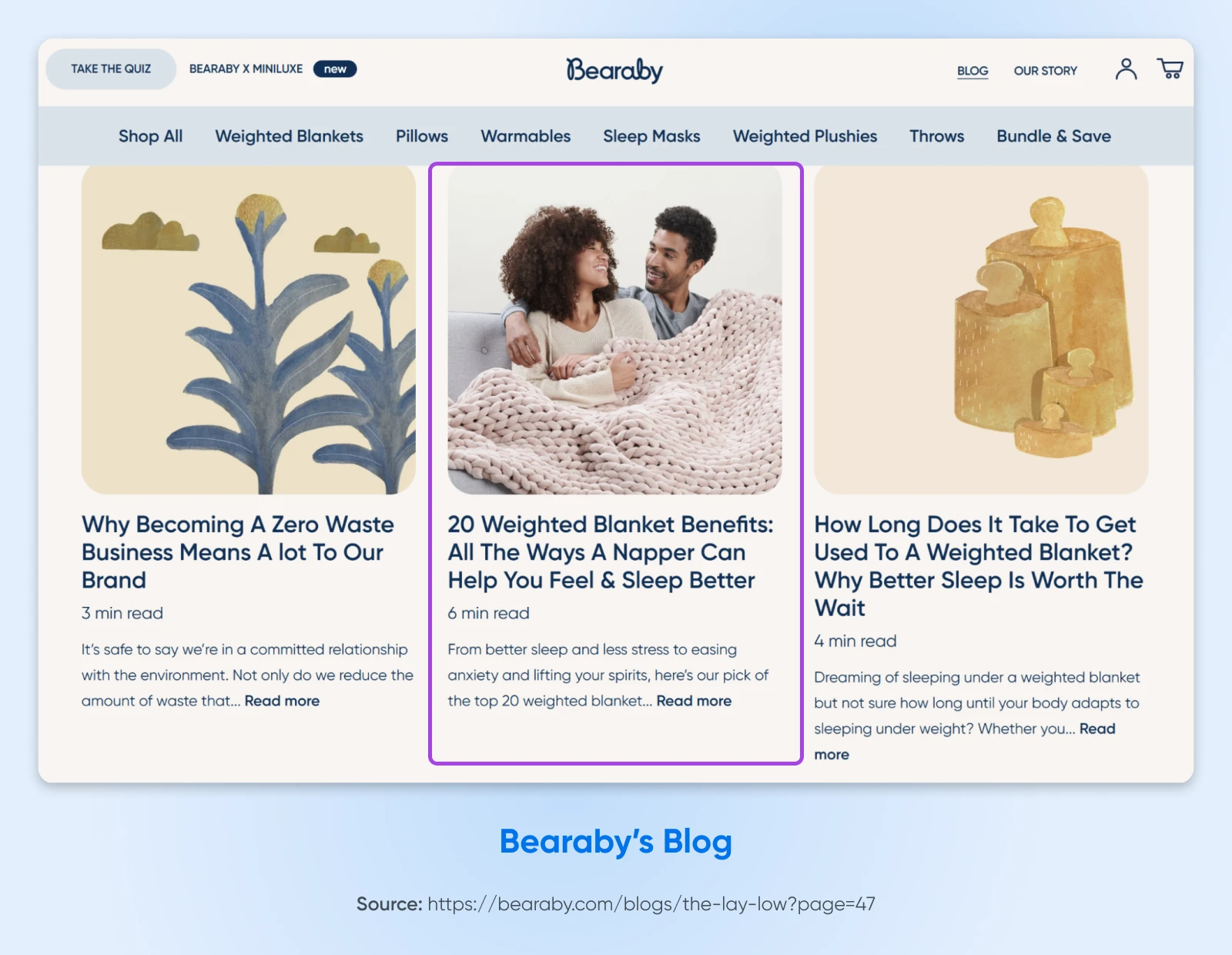
Here’s an example: A freelance website designer creates a mini “Website Makeover” email series. Each email tackles a different design concern (like mobile responsiveness, site speed, or font choices). After consuming these tips, many prospects realize they need professional help — and hire the freelancer to revamp their sites.
How To Choose the Right MOFU Content for Your Business
Think of MOFU as your chance to build a relationship with potential customers. They might have discovered your bakery through a cupcake-baking blog post, for instance, but now they want to know if your products can fit their dietary restrictions, or whether you can handle a large catering order. Provide them with content that speaks directly to these specific questions.
Here are some tips to choose MOFU content types that will fit your business needs and budget while maximizing effectiveness:
- Focus on quality over quantity: One well-crafted email series or a single informative webinar can convert more leads than multiple half-baked efforts.
- Consider the time investment for your audience: They’ve shown initial interest, but they won’t watch a three-hour webinar unless it’s incredibly valuable.
- Match content type to your product complexity: If your offering is straightforward (like a simple physical product), a quick comparison chart might suffice. For a more complex service, a case study or workshop might be more compelling.
Pro Tip: If you’re strapped for time, start with one substantial MOFU piece — like a concise but informative ebook or a short email series. Gather feedback from your audience, see what questions still remain unanswered, and expand from there.
How To Create MOFU Content
Follow these steps to create MOFU content for your business:
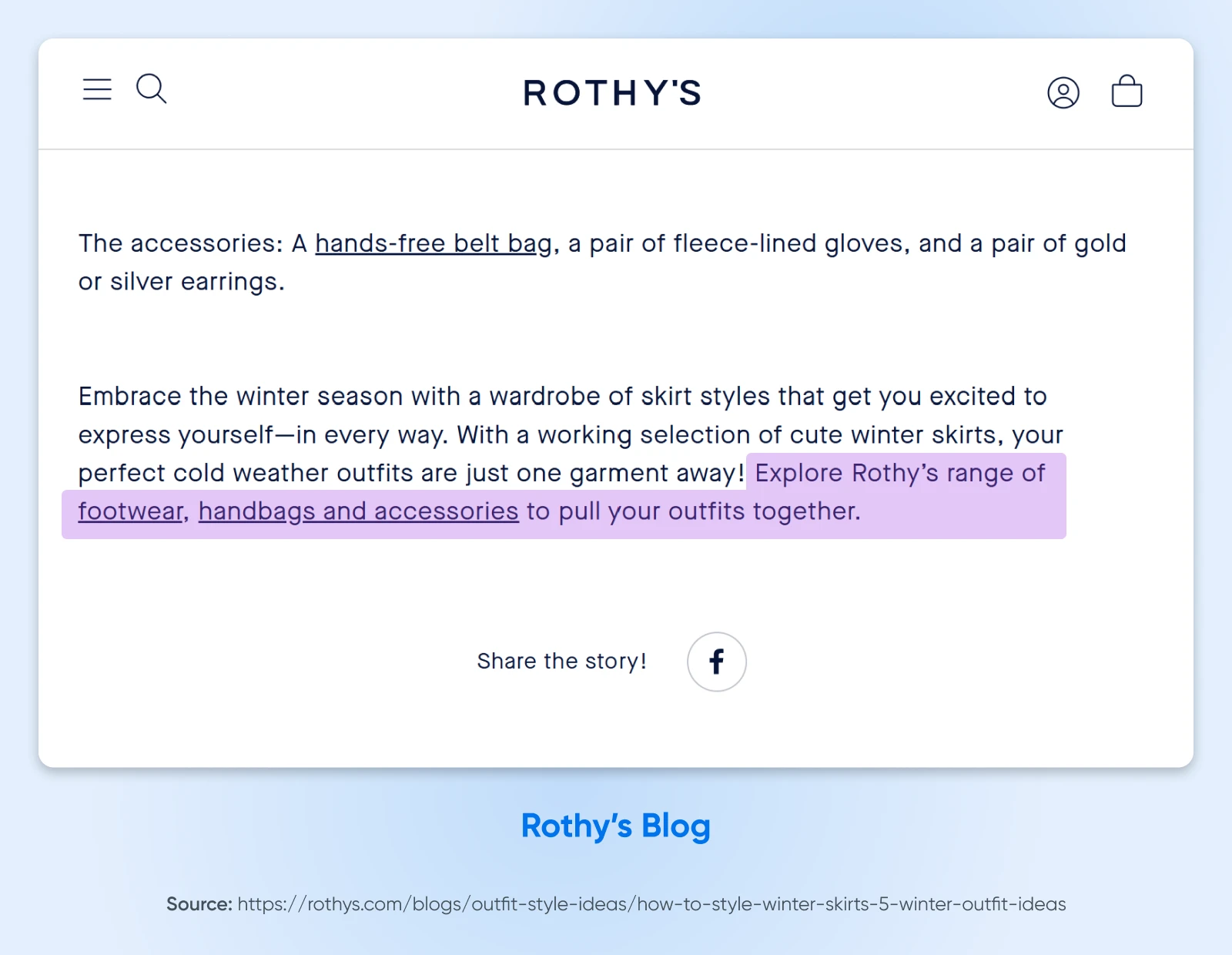
How To Distribute MOFU Content
Getting MOFU content in front of the right people often requires more targeted efforts. You might use:
- Email drip campaigns: Once someone joins your email list at the TOFU stage, automatically send them relevant MOFU content over time.
- Retargeting ads: Show MOFU content to people who have engaged with your brand (for example, those who have visited your site or liked your Facebook page).
- Landing pages: Create dedicated pages that showcase your case study or comparison chart or offer a free webinar sign-up.
- Collaborations and partnerships: Co-host a webinar with a related but non-competing business to widen your reach.
How To Measure MOFU Success
If your MOFU content is resonating, you should see people taking a stronger interest in your offerings. They might schedule a discovery call, request a price quote, or sign up for a limited trial. Keep track of these signals, because they show how well you’re transitioning folks from “just curious” to “seriously considering.”
Some good metrics to track to gauge the effectiveness of your MOFU content might include:
- Email open and click-through rates: Are people engaging with your content?
- Webinar attendance and replay views: Do registrants show up and stay till the end?
- Landing page conversions: Are visitors signing up for your offer, demo, or consultation?
- Lead quality: You can gauge this by how many MOFU leads eventually move to the bottom of the funnel (BOFU).
Keep in mind that you don’t have to break the bank to keep tabs on your MOFU content efforts. Use free or low-cost email marketing platforms (like Mailchimp’s free tier) and free webinar platforms (like Zoom’s free plan, up to certain time limits) to keep your costs down.
Bottom-of-the-Funnel Content
At this stage, your prospects are close to making a purchase decision. They’ve done their research, compared options, and they’re nearly ready to pick a provider or place an order. BOFU content should give them that final nudge — the reassurance that your business is the best choice.
Types of BOFU Content
BOFU content can include:
- Product demos and trials: Let them test-drive your product or service.
- Free consultations: One-on-one sessions to discuss specific needs and solutions.
- Coupon codes or special offers: Sometimes a timely discount or bonus can tip the scales in your favor.
- Detailed testimonials and reviews: Show real results from real people, with compelling details.
- ROI calculators and pricing guides: Help customers understand the true value they’ll get.
Here’s an example: A local fitness studio offers first-time visitors a free week of group classes. Potential members who’d been sitting on the fence jump at the offer, like the vibe, and sign up for monthly memberships.
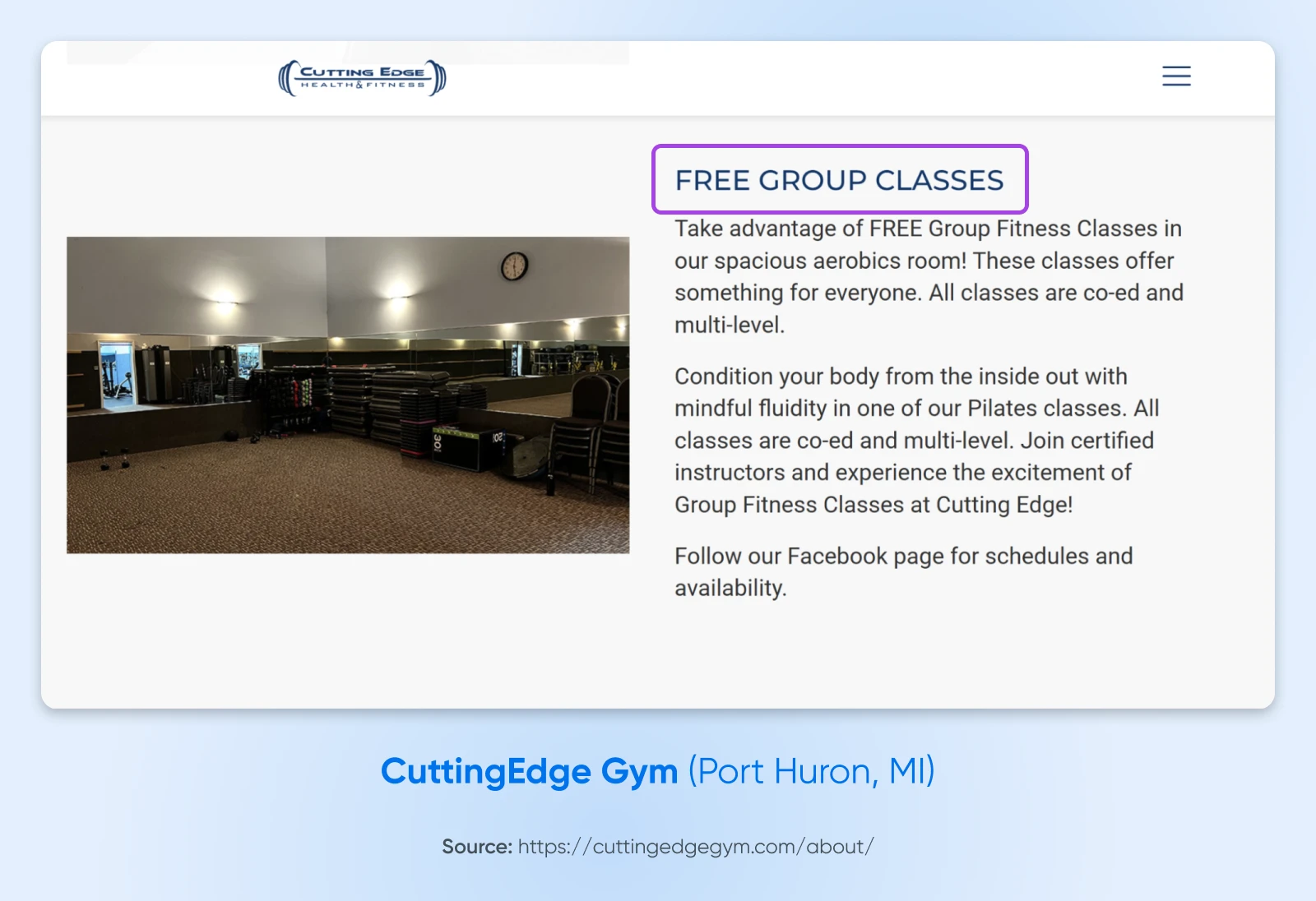
How To Choose the Right BOFU Content for Your Business
By the time someone reaches the bottom of your funnel, they’ve pretty much decided they need what you offer. The question is whether you are the right fit. BOFU content pushes them over the finish line with final reassurance, tangible evidence, and perhaps a little extra incentive.
Here are some ways to think about BOFU content that can help you choose the best types for your business needs:
- Think about risk reduction: Is there a way to let potential customers “try before they buy”?
- Consider what your direct competitors are doing: If everyone is offering 10% off, maybe you stand out with a free 30-minute consultation or a personalized product recommendation.
- Align your BOFU offer with the price point of your product or service: Higher-priced offerings might require more trust-building content (like detailed demos or extensive case studies).
How To Create BOFU Content
These steps can help you create BOFU content for your business:
Candle brand Boy Smells, proudly displays their reviews (good or bad) right on their website.
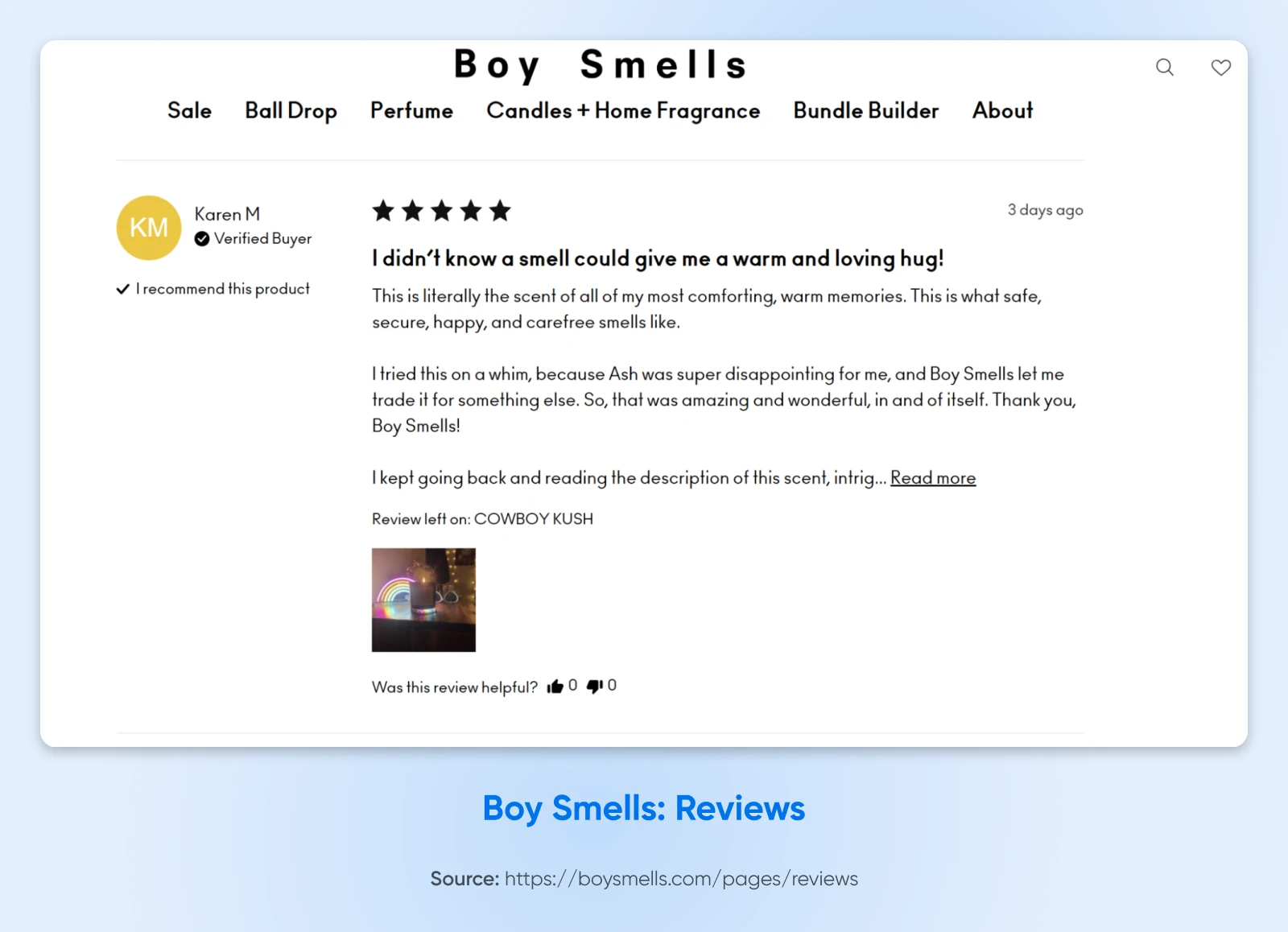
How To Distribute BOFU Content
You don’t need a big budget here, either. Often, authenticity and clarity matter more than fancy design or expensive ads.
Consider using:
- Personalized emails: If someone’s repeatedly clicked on product links or visited your pricing page, send them a tailored offer.
- Sales pages: A concise, benefit-packed page that leads to checkout.
- Direct outreach: For B2B products or services, you might follow up directly by phone or email once they’ve shown significant interest.
How To Measure BOFU Success
The most direct measure of BOFU success is conversions: how many people actually buy after engaging with this content?
You can refine the process by monitoring metrics like cart abandonment rates, cost per acquisition (if you’re running paid ads), and even feedback from new customers.
Did they find the process easy? Did anything confuse them? Use this intel to continuously improve.
- Conversion rate: Out of the people who see your BOFU offer, how many make a purchase?
- Average order value: Are they upgrading to bigger packages once they decide to buy?
- Customer acquisition cost (CAC): Compare how much you spend on marketing with the revenue from new customers.
- Customer feedback: If new customers are thrilled, you’ll know you’re on the right track.
Pro Tip: If you don’t have the resources to build an entire e-commerce site from scratch, consider user-friendly platforms or plugins (like WooCommerce if you use WordPress). Pair that with reliable hosting to make sure your site has minimal downtime to disrupt potential purchases.
How DreamHost Can Help You Optimize Your Funnel
Now that you’ve seen how a content marketing funnel works from top to bottom, you might be wondering, “Where does my website fit into all this?”
The answer: everywhere.
Your site is the foundation for your entire funnel — it’s where you host your blog posts (TOFU), landing pages and webinars (MOFU), and product demos or special offers (BOFU). When your website is slow to load or difficult to navigate, potential customers can drop off at any funnel stage.
That’s where DreamHost comes in. With reliable hosting, easy WordPress setup, robust performance analytics, security features, automated backups, and so much more, you can trust DreamHost to handle your website — which frees up your time to focus on your content marketing funnel and other important aspects of running your business. When your digital foundation is strong, it’s that much easier to build, manage, and optimize your funnel — from TOFU to BOFU and beyond.
Now go forth and funnel! Building a content marketing funnel might feel like a big project, but remember that you already have most of what you need: expertise in your field, a good sense of who your customers are, and (hopefully) a solid website holding it all up. And if not, DreamHost is here to help.

Pro Services – Marketing
Get More Visitors, Grow Your Business
Our marketing experts will help you earn more traffic and convert more website visitors so you can focus on running your business.
Learn More
This page contains affiliate links. This means we may earn a commission if you purchase services through our link without any extra cost to you.


